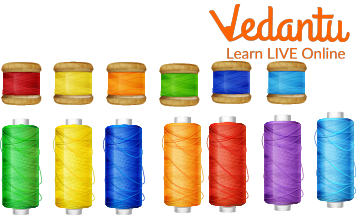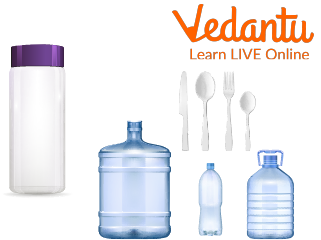




Why Are Synthetic Materials Important in Everyday Life?
What would life be like if we wore concrete clothes or rode bikes made out of glass? Wouldn’t that be a sight to laugh at? Concrete and glass are just two of the many materials we use in our everyday life. Most of these materials have undergone changes from their actual or natural state.
Chemical processes change raw materials into materials that have special attributes. For example, the clothes that we wear today are majorly made up of man-made fibres, i.e., they are not completely made out of cotton.
This is to improve the softness of the material, while also making the fibre stronger and more stretchable. For example, a sports t-shirt made from polyester offers more breathability than a normal cotton one. Synthetic materials have made human life easier in ways that cannot be counted.
What are Synthetic Materials?
Synthetic materials or the materials made in the chemical industry are all around us and some of these synthetic materials also enter our bodies. These new-age synthetic materials include the paint on our cars, to the food that we eat.
Yes! Many of the foods we eat today have small contents of synthetic flavouring or synthetic colours added to them. When these foods are consumed, the synthetic materials enter our body and could prove to be harmful if they are found to be in large quantities.
Synthetic Additives
We all know that snacks should only be consumed occasionally because of the high quantities of sugar and fats they contain. But did you know that these foods also contain certain chemicals called additives?
The food and beverage industry uses various additives to stop food from getting spoilt or to improve the texture and flavour. There are a number of different additives, some are natural, while some are synthetic.
Synthetic Materials - Examples
The first clothes were just animal skins. But man has progressed so far now that the clothes we wear contain man-made fibre. Today, man uses chemicals, or petrochemicals to make synthetic fibres. These include acrylic, nylon, rayon, and polyester which are cheaper but also stronger alternatives to natural materials.
Manufacturing Nylon

Nylon Thread
Nylon was the first-ever fibre to be entirely made out of chemicals, that is, it was the first synthetic fibre. Nylon pellets are heated to 260°C to create a polymer solution that is in a molten state. This is done with the help of a spinneret - the process is called extrusion.
As this polymer comes out of the small holes into the cooler atmosphere of the factory, it begins to shape into solid threads of nylon. These are further treated in a specific cooling wash, spun into a large yarn, and then wound onto a reel.
Ceramics
We are all surrounded by ceramics. A number of products that we handle daily are made from ceramic material. Ceramics have a broad range of uses - constructing the walls of a house, mending broken teeth, or even insulating cables. There are two groups in which ceramics have been separated. The first group contains materials that are moulded into a particular shape before being heated - the making of bricks and pottery are examples of the first group. The second group contains materials that are given a particular shape after being treated by heat. Examples are cement and grass.
First Use of Plastics

Plastic Daily-Use Items
Alexander Parkes, an English chemist, put forth the first plastic material in the 1850s. In today’s times, plastic is made from the chemicals found in the oil. Plastics are used for making toys and several other household products such as chairs and bins.
Summary
All the materials used in a game of tennis perfectly suit their functions. Tennis rackets have strong nets as they need to stop balls that are in motion and usually very fast. Balls, too, are made from materials that do not tear upon collision with the ground or the racket.
The court surface and tennis shoes are also made from suitable, strong, synthetic materials which allow them to withstand harsh use and the wear and tear caused by the players playing the game. It is only because of advanced science that we are able to enjoy the game of tennis - or basically, any other activity as synthetic materials are found everywhere.
FAQs on Synthetic Materials: Meaning, Facts & Real-World Examples
1. What is a synthetic material?
A synthetic material is a substance that is created through chemical processes by humans and does not occur naturally. These materials are often made from small chemical units called monomers that are joined together in long chains to form large molecules called polymers. This process is known as polymerisation.
2. What are some common examples of synthetic materials in our daily lives?
Synthetic materials are very common in everyday items. Some examples include:
- Fibres: Nylon, Polyester, Rayon, and Acrylic used in clothes, ropes, and carpets.
- Plastics: Polyethene used for bags, PVC for pipes, and Bakelite for electrical switches.
- Adhesives: Synthetic glues and resins.
- Dyes: Man-made colours used to dye fabrics.
3. What is the main difference between natural and synthetic materials?
The primary difference lies in their origin. Natural materials are derived directly from plants, animals, or the ground, such as cotton, wool, and silk. In contrast, synthetic materials like plastic and nylon are man-made through chemical synthesis, typically using raw materials from petroleum or coal.
4. How is rayon made, and is it considered fully synthetic?
Rayon is often called a semi-synthetic fibre because its raw material is natural, but it is manufactured through an extensive chemical process. It is made from purified cellulose, usually from wood pulp, which is chemically treated to form a viscous liquid. This liquid is then forced through a spinneret to create fibres. Due to its silk-like texture, rayon is also known as 'artificial silk'.
5. What are the main types of synthetic fibres?
The most common types of synthetic fibres, each with unique properties, are:
- Rayon: Made from wood pulp, known for its absorbent and silk-like feel.
- Nylon: The first fully synthetic fibre, valued for its exceptional strength, elasticity, and light weight.
- Polyester: A popular fabric that is strong, wrinkle-resistant, and dries quickly.
- Acrylic: A synthetic substitute for wool, known for being warm, soft, and lightweight.
6. Why are synthetic materials like polyester and nylon so popular for making sportswear and ropes?
The popularity of these materials for specific applications stems from their unique properties. Nylon is exceptionally strong, elastic, and resistant to abrasion, making it ideal for making ropes, parachutes, and fishing nets. Polyester is durable, wrinkle-resistant, and hydrophobic (does not absorb water), which allows it to dry very quickly, making it a perfect choice for sportswear and outdoor gear.
7. What is the difference between thermoplastics and thermosetting plastics?
The key difference is how they react to heat. Thermoplastics are plastics that can be softened upon heating and hardened upon cooling, allowing them to be remoulded multiple times (e.g., Polyethene, PVC). Thermosetting plastics, once moulded and set, undergo a chemical change and cannot be softened or remoulded by heating. They retain their shape permanently (e.g., Bakelite, Melamine).
8. If plastics are so useful, why are they considered a major environmental problem?
The primary environmental issue with plastics is that most are non-biodegradable, meaning they cannot be broken down by natural organisms. This causes them to persist in the environment for hundreds of years, accumulating in landfills and oceans, where they pollute ecosystems and harm wildlife. Furthermore, their production relies on non-renewable fossil fuels.
9. How does the 5R Principle help in managing plastic waste responsibly?
The 5R Principle offers a clear strategy for minimising the environmental impact of plastic waste. The principles are a guide to responsible consumption:
- Refuse: Avoid using non-essential or single-use plastic items.
- Reduce: Minimise the consumption of plastic products.
- Reuse: Use items like plastic containers and bottles multiple times before discarding them.
- Repurpose: Find a new use for a plastic item instead of throwing it away.
- Recycle: Collect plastic waste so it can be processed and made into new products, conserving resources.









